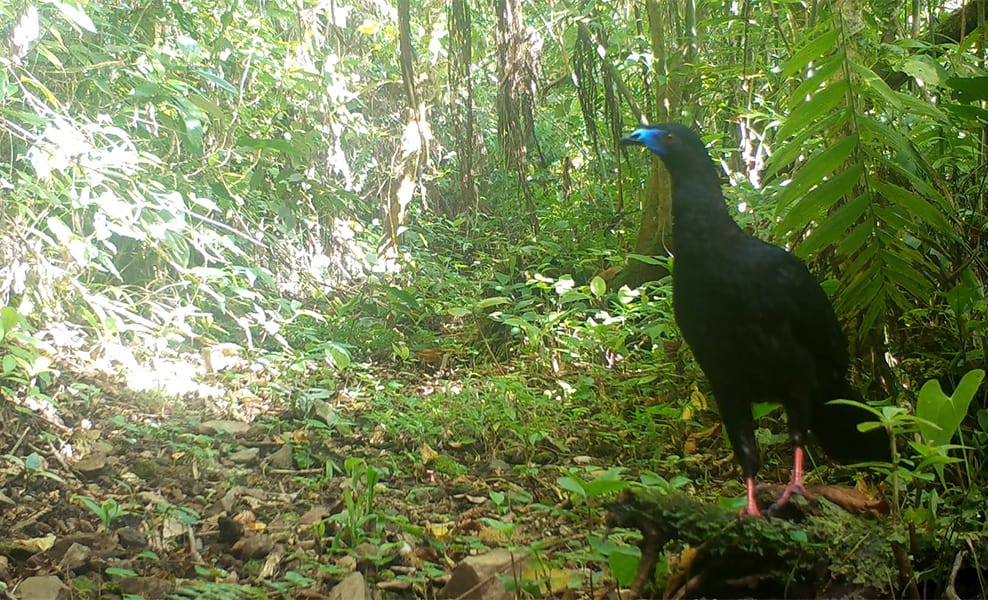The cracidae (sounds like cra-si-die) family consists of large turkey-like neotropical birds like curassows, chachalacas, and guans. Costa Rica is home to five members of this family, and today the spotlight shines on the most mysterious of these birds, the black guan.
The black guan (Chamaepetes unicolor) is known as the pava negra, which translates to black turkey, in Spanish. Like all the members of this family of birds, it’s rather large, coming in at 24 inches long and weighing over two pounds. As the name suggests, black guans are almost entirely black save for red legs, red eyes, and a bright blue face.
Black guans are endemic to Costa Rica and western Panama, meaning their entire range is limited to those two countries. Within the borders of Costa Rica and Panama they’re only found at high elevations. They prefer dense mountain forests in protected areas, but they can be found in more patchy high elevation forests mixed with secondary growth and some clearings if they aren’t heavily hunted.
They patrol the treetops and the forest floor singly, in pairs, or in small family groups looking for their food of choice, fruit. They consume a variety of fruits over a fairly large geographic area, so they’re thought to be important seed dispersers. The roost in large, isolated trees at night. They fly with a flew flaps and then glide. Their nests are a platform of leaves and twigs placed amid a mass of epiphytes high in a tree, usually containing two rough-shelled, white eggs.
That’s about all of the information out there in the world about the black guan. They haven’t been studied to any great extent. A few researchers have looked into which fruits they prefer to eat and to what extent they help the seeds of those fruits germinate after digestion.
Others have looked into how they move up and down in elevation depending on the time of the year. As far as I can tell, the information that I gave you about their nests was based on one observation that I tried to track down more information about, but it was hidden behind a paywall. So bird enthusiasts, get yourself into black guan territory and spend some time observing them you could end up contributing to science.
I personally haven’t yet had the privilege of seeing a black guan in person. High elevation forests are a habitat that I do not frequent regularly which further hampers my ability to interact with this bird. I’m writing this article because I have recorded them a few times with my camera traps. A few years ago, I had the pleasure of placing my camera traps in Aquiares, a historic coffee farm that sits high on the slopes of the Turrialba Volcano.
They conserve areas of high elevation forest amongst their coffee fields, and I was able to record a handful of black guan videos on the forest floor. Each video featured a pair of black guans strutting by, eyeballing the camera. I was, of course, tickled pink to record a new species of large bird and ever since I’ve been interested in learning more about the black guan. I hope to have the opportunity to record more videos of them in the future, but until then, I’ll share the few clips that I have now in the video below.
About the Author
Vincent Losasso, founder of Guanacaste Wildlife Monitoring, is a biologist who works with camera traps throughout Costa Rica. Learn more about his projects on facebook or instagram. You can also email him at: vincent@guanacastewildlifemonitoring.com






